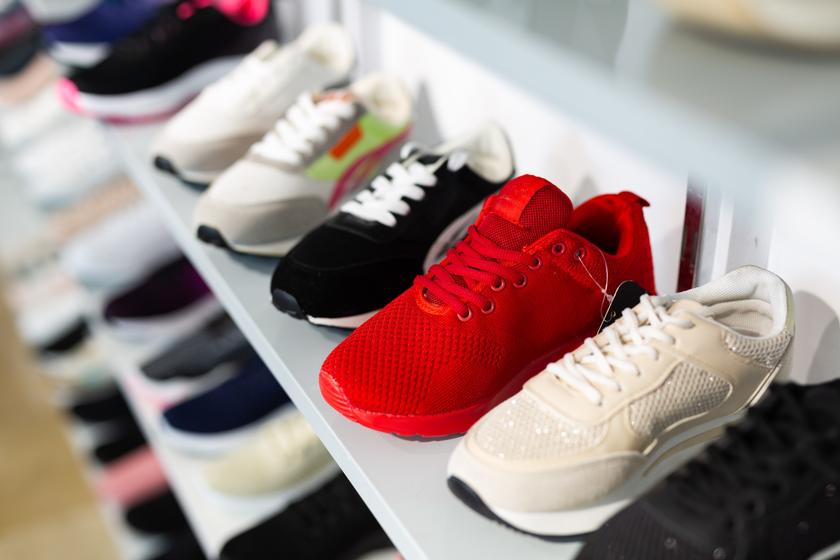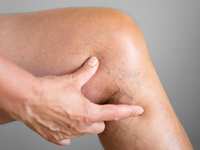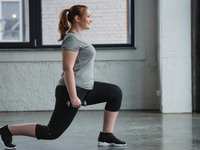Tips for Choosing Running Shoes

It's easy to get overwhelmed shopping for almost anything these days. Choosing running shoes is no different — there's no shortage of brands and style choices available. If you're looking to buy running shoes to start running or need to replace your running kicks, here are some tips that can get you in the right pair.
1. Consider where you run
First ask yourself: Where do you run most? If you enjoy running on a treadmill or outdoors on sidewalks, roads, or gravel or paved trails, road running shoes will likely work for you. For those who like to get outside and run in nature to experience elevation or varied terrain, trail running shoes are your best bet. Trail running shoes are stiffer and have more traction and foot protection features than road shoes to help runners handle tougher terrain and the elements.
2. Know thy feet (and gait) to discover your shoe type
It's not just your shoe size you need to know when choosing running shoes. Knowing your foot type — specifically, what type of foot arch you have and where your foot falls when you walk — can help you to get in the right type of running shoes. People with a low arch (sometimes called "flat feet") may need more stability and motion control in a running shoe. People with high arches may want to look for a neutral shoe, with or without more cushioning. Stability is also important to those with average arches, also called medium arches.
"Stability running shoes can provide minor corrections to a runner's gait to help prevent overpronation, or when the arch moves excessively downward or inward," says Dawn Stuckey, an athletic trainer with Houston Methodist. "Neutral shoes won't provide correction, rather allowing the runner's feet to do what they normally would."
Cushioning in running shoes often comes down to personal preference — try on several pairs to get a feel for what feels just right for your gait and running style.
Can't decide what you need on your own? Many running stores have professionals that can help you select shoes and have generous exchange policies to let you get some runs and walks under your belt so you can know if the shoes work for you.
"Let the experts help you select the correct shoe," Stuckey says. "These stores can observe your running gait on their treadmill or outside for a few minutes and then help you find the correct shoe. Make sure to tell them if you are a seasoned runner or new to the sport, so they can follow up with more questions."
3. Make sure the shoes fit
It's safe to say no one is likely to run a 5k in a pair of heels or loafers. But the shoe sizer devices you see lying around the shoe department in a store are designed to discover how your feet will fit into dress shoes — not athletic shoes. So, if you've ever sized your foot with one of those devices, you may be surprised to learn that your gym or running shoes should be a half or full size larger than your dress-shoe size.
Why? Choosing a half size to full size larger allows for your foot to move freely as it expands and swells while running. Our feet naturally swell during the day, as well as when we run. Our toes extend forward, and the ball of the foot widens as we push off the ground as we run.
If you're buying shoes for the gym or to train for distances no longer than a 5k, choose shoes that are a half size larger than your dress shoe size. For those running longer distances as they train for half and full marathons, you should choose a shoe that's at least one size larger.
So how do you know if your running shoes fit? Make sure there's room to wiggle your toes — your toe should not touch the front of the shoe. A good rule of thumb (pun intended) is to do a quick measure using your (or, preferably, someone else's) thumbnails to measure the space between the toes and the end of the shoe.
"Think back to the mom test that your parents did when buying shoes for you as a kid," Stuckey says. "You actually need someone else to check the length for you, but there should be a half to full thumbnail's width between your toes and the end of the shoes. If your feet go numb while running it is almost always a sure-fire sign that your shoes are too small."
4. Know when to replace your shoes
Depending on your activity level, running shoes can last anywhere from 300 to 400 miles, or about 6 months of regular use. Everyone is different, and training habits vary, so it's important to know the signs that your shoes have seen better days.
"If you see wear and tear on the bottom or that the tread is smooth, you have taken the shoe further than it was meant to go," Stuckey says. "The interior support structure of the shoe will be broken down well before the outsole has worn out. I recommend that people start looking for a new shoe around four months of use, and then you can rotate your current shoes with new shoes for another month or two."
5. Put comfort — not fashion — first
It's easy to get taken in by the cornucopia of colors and designs you'll see in running shoes. If you're a sneakerhead or a fashion-first person, you might veer straight to the pair that catches your eye the most. If there's ever a time to not suffer for fashion, it's when you're training for any kind of long-distance race.
"Make sure it's the correct fit for you first, then pick style after," Stuckey says.
Also, if you're looking for a statement pair for your race day, make sure you go for some runs in those shoes well before race day.
"Be sure to break them in with two or three runs before using them on race day," Stuckey says. "Do not try new things on race day!"
By: Kim Rivera Huston-Weber

















